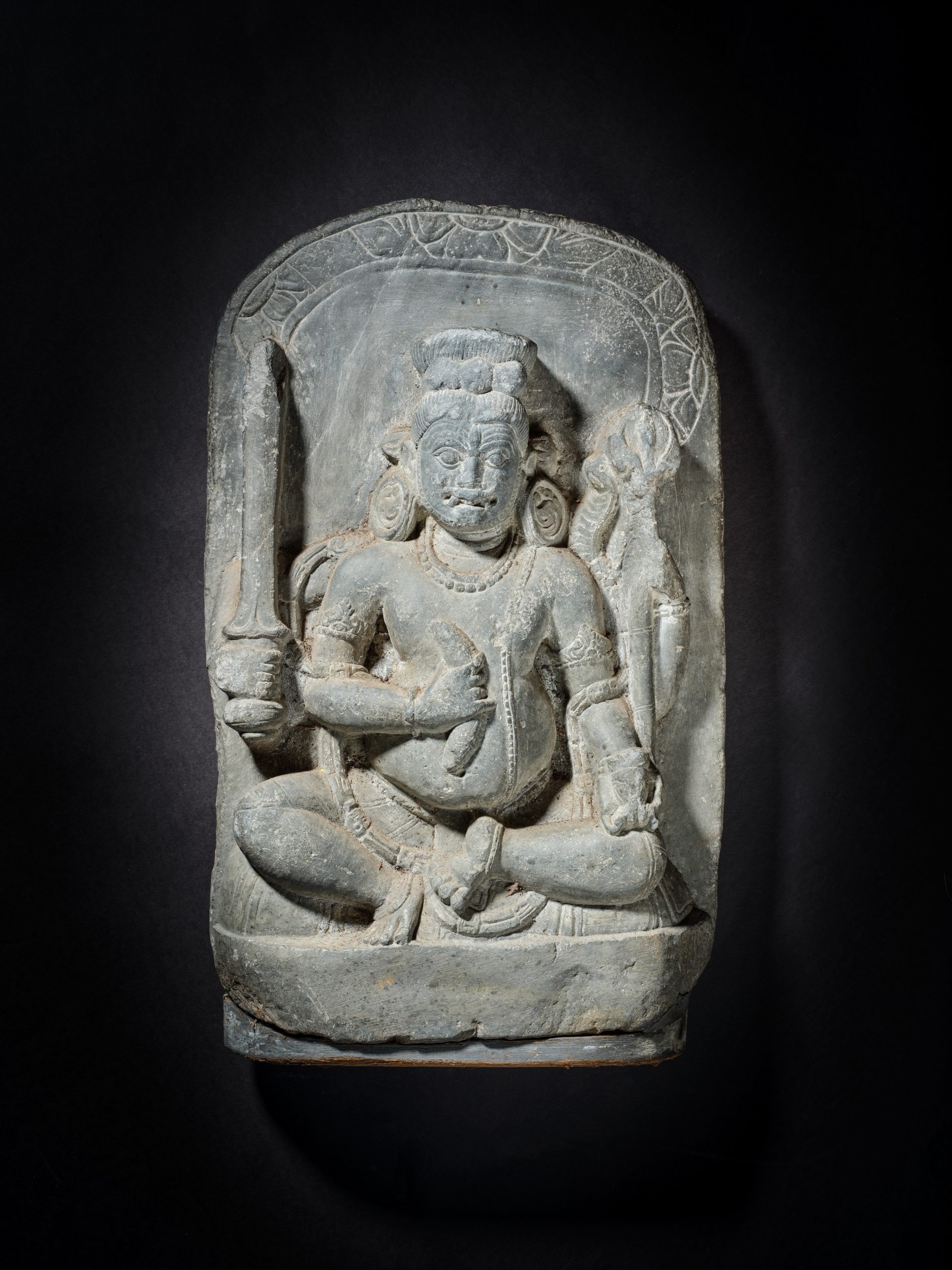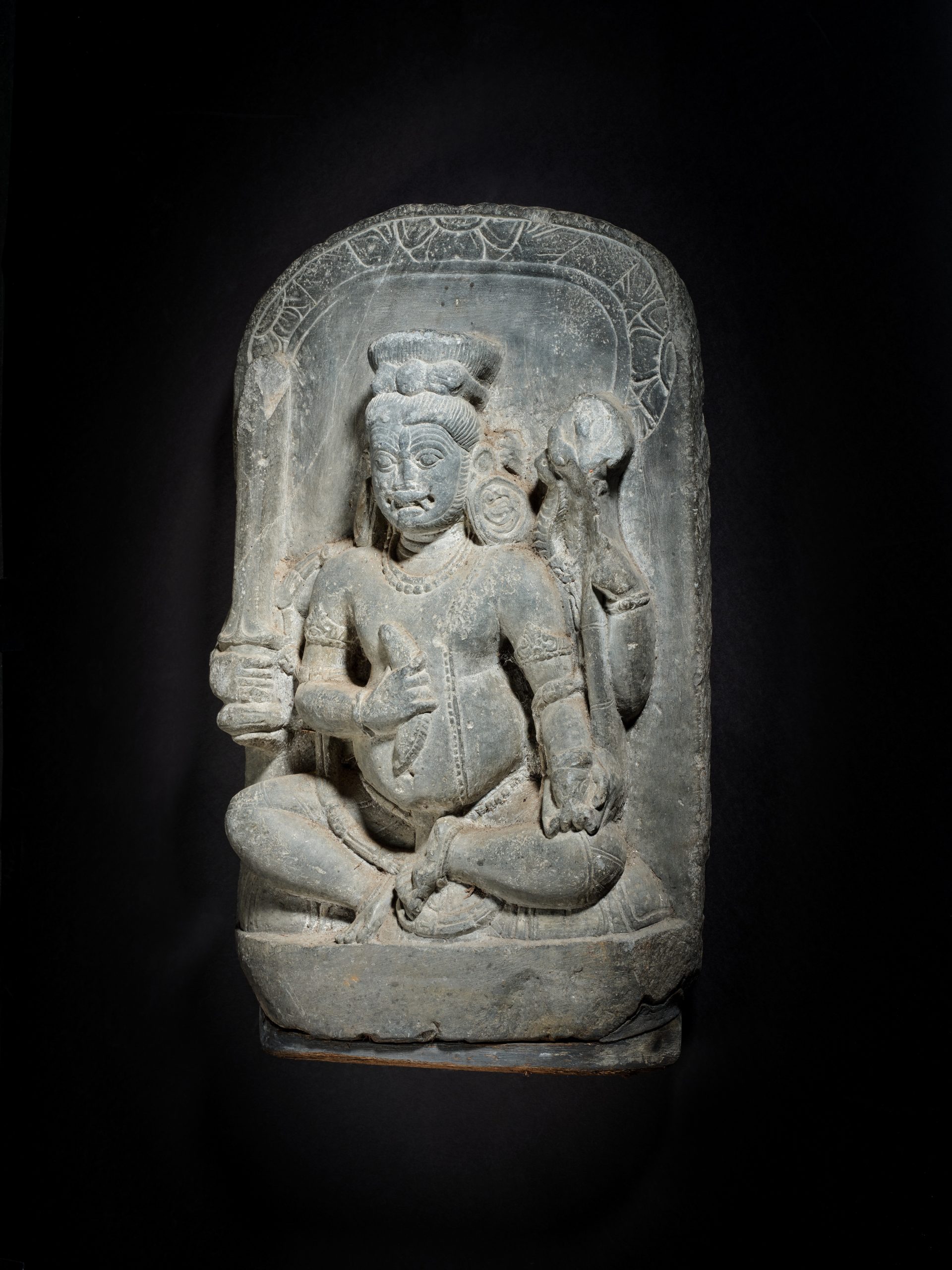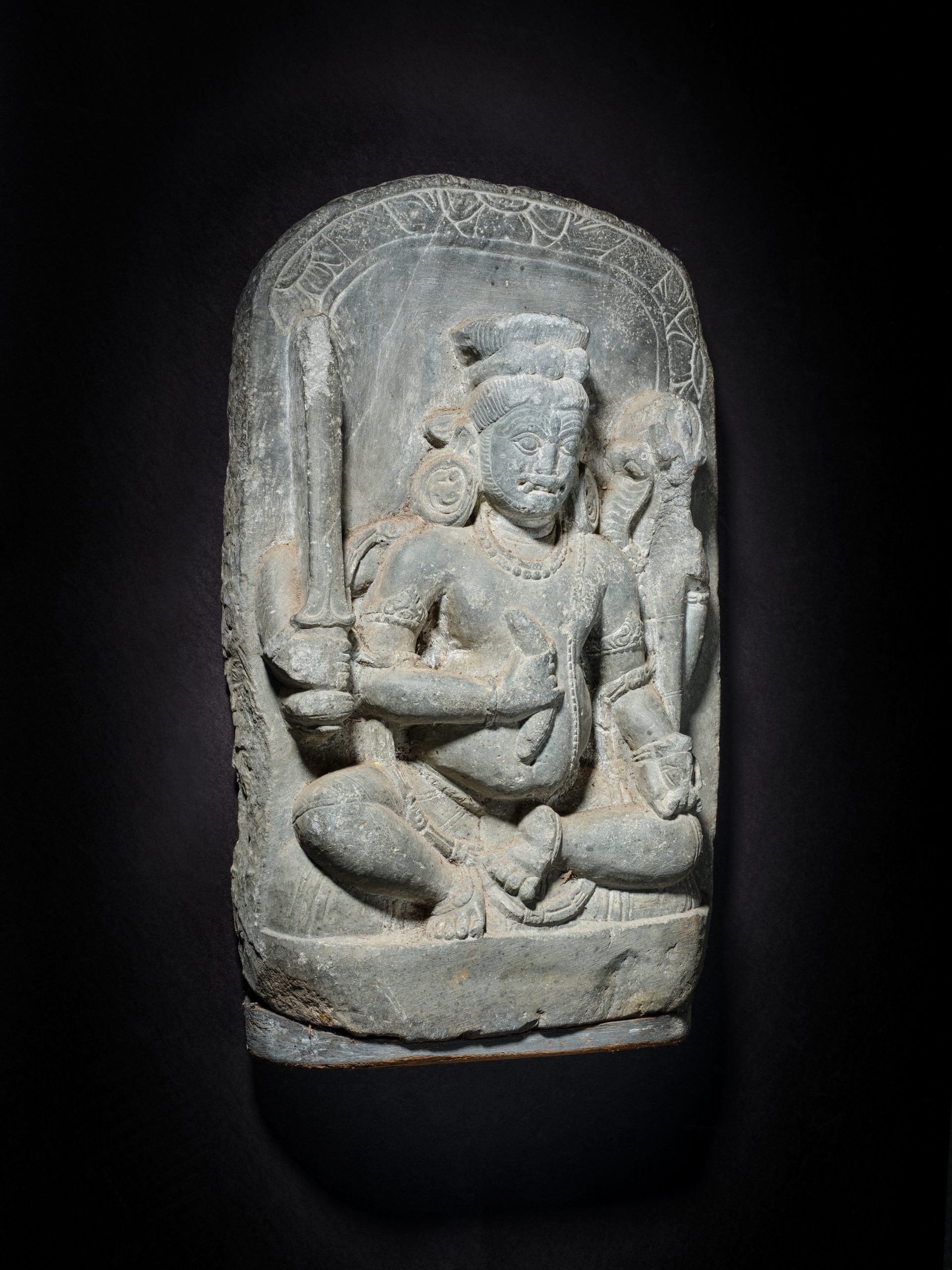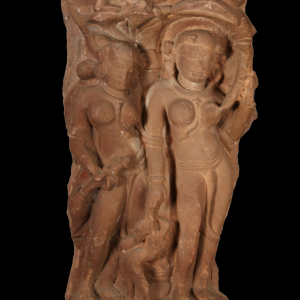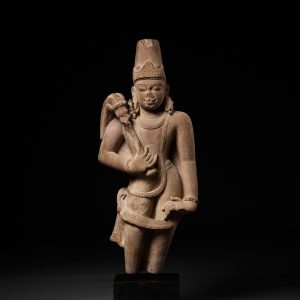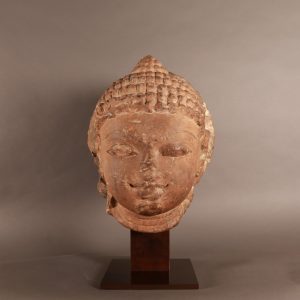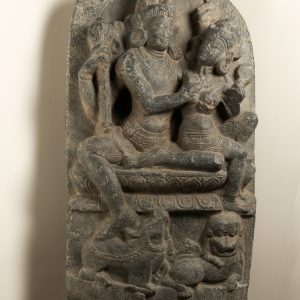Bhairava stele
18 000,00€
Black stone
East India
11th-12th century, Pala period
H. 27 cm
Description
This is a representation of Bhairava, the wrathful and fearsome form of the god Siva, protecting the universe. The various attributes of the god can be seen, with a sword in his upper right hand and a crescent moon in his second. In his upper left hand is a trident (triśūla) with a snake coiled around it. A garland adorned with skulls also encircles the god, recalling his destructive aspect.
The god’s hair is gathered into a bun (mukuta) like the Yogin, because he is the representation of the perfect Yogin. His finely incised hair crowns a face with a deliberately ferocious expression. His eyebrows are furrowed, his eyes angry, and his mouth turned up in an aggressive sneer, as befits the classical representation of Bhairava.
Bhairava is surmounted by a stylised plant frieze. Unlike other later examples of Pala art, this stele has a crude simplicity that allows us to date it to the earliest productions of the period. The absence of apertures or ornamentation on the base of the stele corroborates this hypothesis, making the whole concise and elegantly sober.
Provenance: Parke-Bernet, in the 1970s, then private American collection (by repute).

